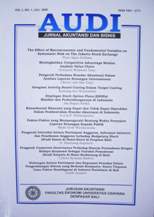PREVENTING BIAS IN THE BALANCED SCORECARD IMPLEMENTATION FOR PERFORMANCE ASSESSMENT
Abstract
Balanced scorecard has been widely recognized as a tool of comprehensive performancemeasurement both for small and large organizations. However, when the method is
employed to compare performance of two or more business units, evaluator might
encounter with common-measures bias. This bias would emerge when evaluator only pay
attention to common measures existed in the units being evaluated, and ignore the unique
measures belong to each individual unit. This condition would mislead evaluator to reach
inaccurate conclusion regarding the achievement of the units, and consequently could
end up with incorrect decision, such as compensation policy. Such a bias can be reduced
by employing a technique that has been empirically studied by Roberts, Albright, and
Hibbets (2004), called disaggregated plus mechanically aggregated. This technique has
successfully reduced common-measures bias presented in the absence of a treatment
using this technique.
Downloads
Download data is not yet available.
How to Cite
ARDHANI SISDYANI, EKA.
PREVENTING BIAS IN THE BALANCED SCORECARD IMPLEMENTATION FOR PERFORMANCE ASSESSMENT.
Jurnal Ilmiah Akuntansi dan Bisnis, [S.l.], v. 2, n. 1, jan. 2007.
ISSN 2303-1018.
Available at: <https://ojs.unud.ac.id/index.php/jiab/article/view/2552>. Date accessed: 24 nov. 2025.
Issue
Section
Articles
Keywords
balanced scorecard, common-measure bias, performance




















